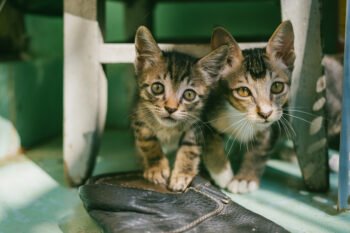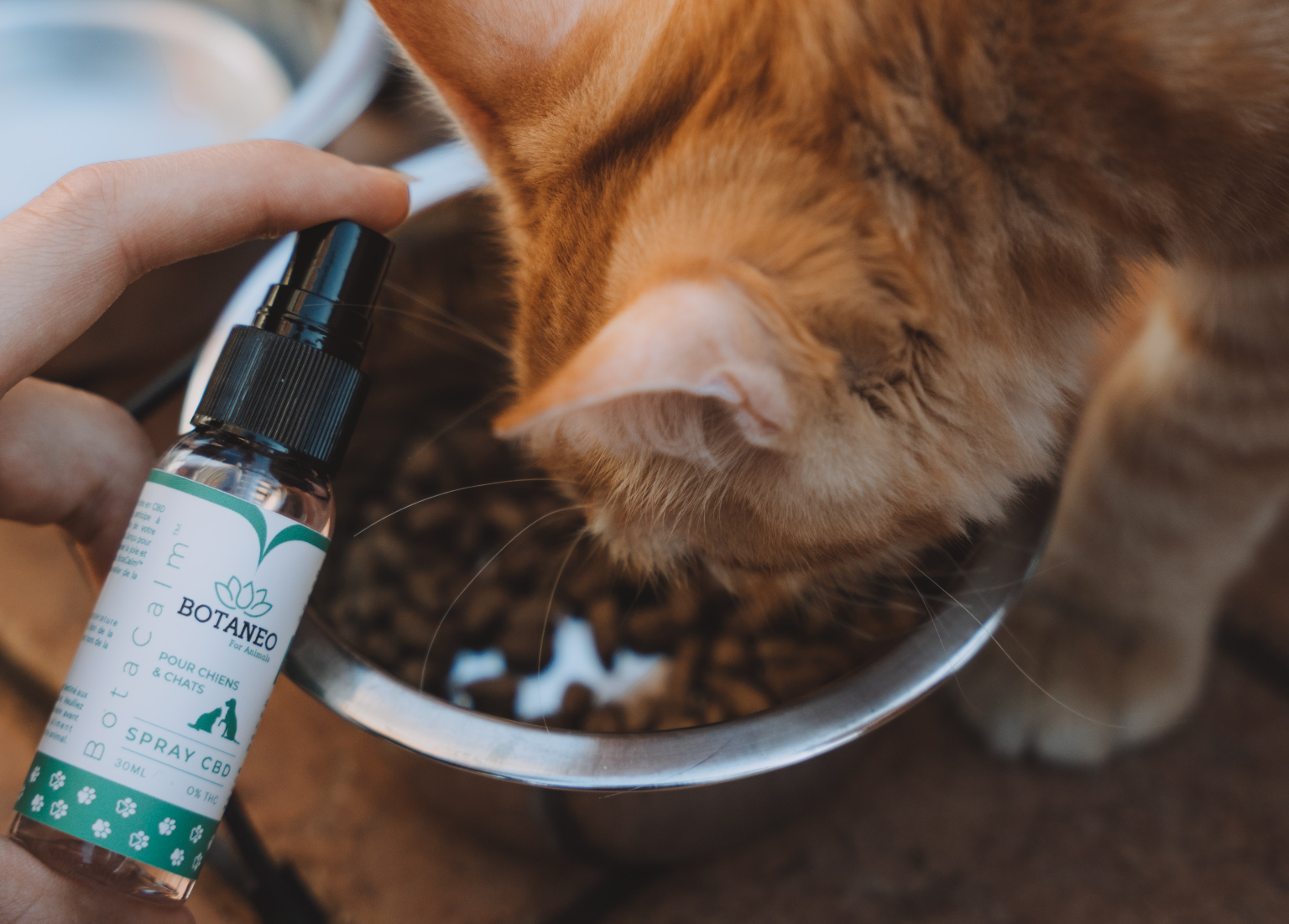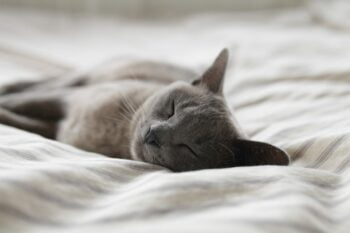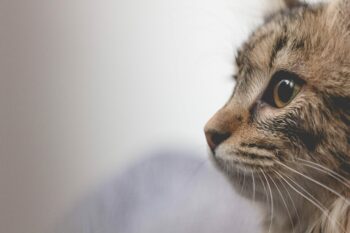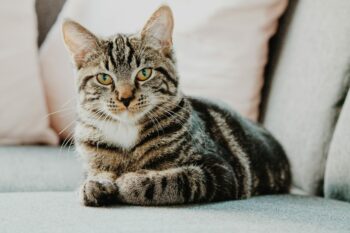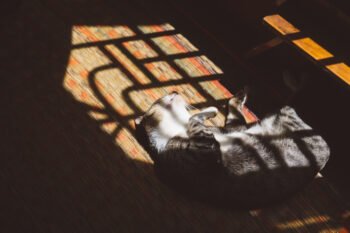First, consider three factors: your cat’s basal metabolic rate (BMR), its core body temperature (CBT) and its size. The BMR is the minimum calorific requirement needed to sustain life in your cat when it is resting. It’s therefore the amount of energy, measured in calories, expended by your cat’s body when your pet is asleep.
The CBT for cats is between 100 F and 102 F. While that’s higher than the normal temperature for humans, 98.6 F, even our temperature can vary during the day, sometimes going as low as 97 F in the morning and as high as 99 F in the evening.
Throughout the animal kingdom, there is a general relationship between an animal’s BMR, its CBT and its size. Smaller body size predicts higher BMR and higher CBT.
Your cat’s metabolism is therefore higher, as is the amount of heat energy released by your cat. Dogs and birds also have higher CBTs, while elephants have a predictably lower measurement.
The slightly higher temperature of your cat does not affect its outward behavior. If you wish to take your cat’s temperature, you can use a digital rectal pediatric thermometer lubricated with petroleum jelly.

